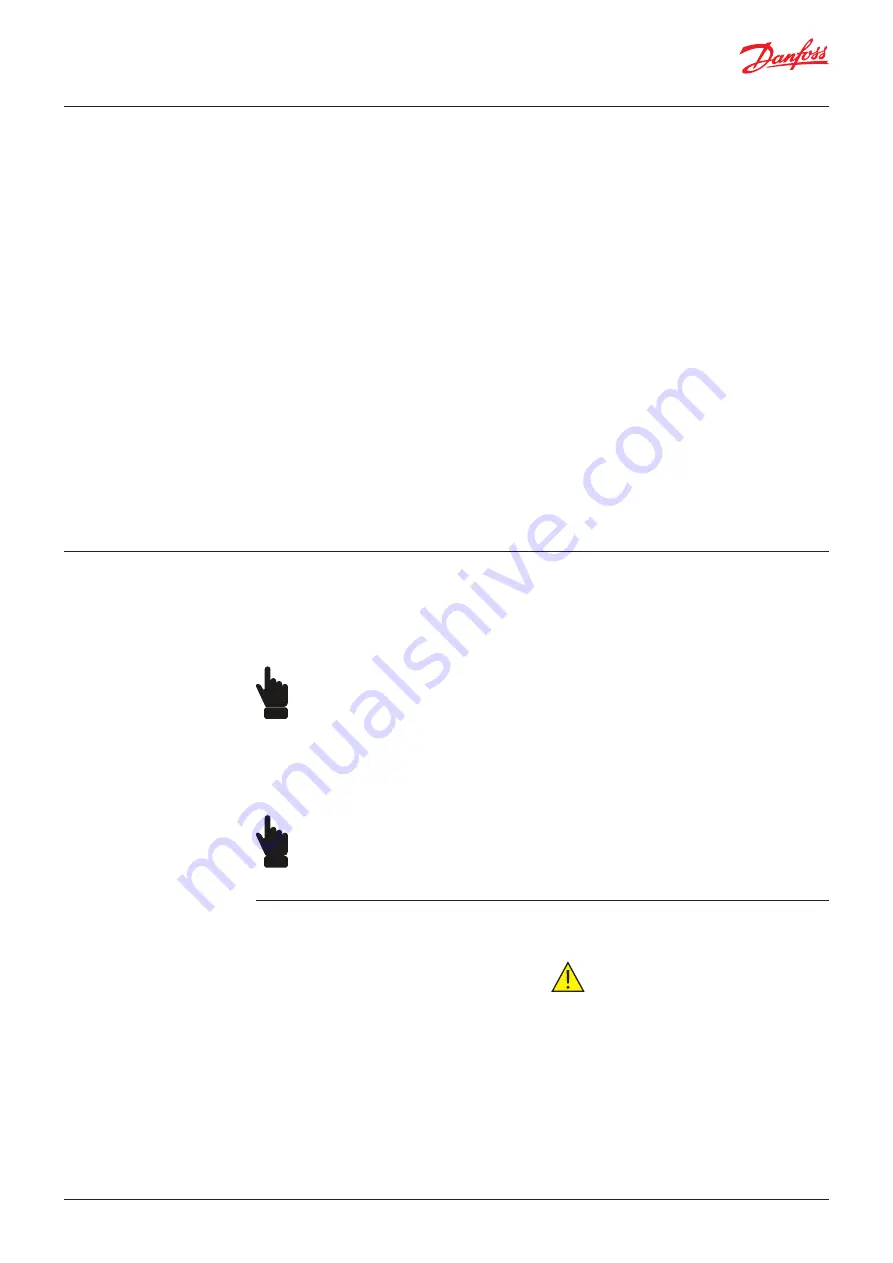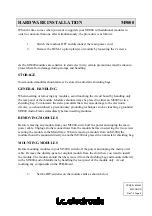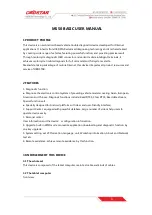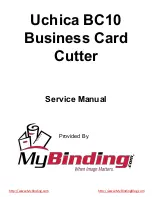
User Guide
|
Plate Type Heat Exchangers, Single plate & Semi-welded - Installation, Commissioning and Maintenance
12 | BC172686461130en-000201
© Danfoss | DCS (ms) | 2019.07
Shut-down
CIP cleaning
Clean-in-Place, CIP cleaning, allows cleaning the
plate heat exchanger without opening it and is
done by circulating cleaning agents in the heat
exchanger.
CIP cleaning of the refrigerant circuit is
not allowed. CIP cleaning can be done
only on the brine circuit.
The use of CIP cleaning is relevant for soluble
fouling only. Prior to CIP cleaning ensure that all
materials in the entire circulation system are
resistant to the cleaning agent/CIP liquid used.
We advise to ask for a confirmation
from the supplier of the cleaning agent
that it will not damage the materials in
the heat exchanger.
Shut-down for a short period
If the plate heat exchanger has to be shut down
for a short period the following procedure should
be followed:
• Gradually close the inlet control valve in the
refrigerant (flow 2) circuit whilst maintaining
the full flow in the liquid circuit (flow 1)
• For high temperature applications cool down
the heat exchanger to below 40 °C ( 104 °F)
• Gradually close the inlet control valve in the
liquid (flow 1) circuit
• Switch off the liquid (flow 1) circuit pump
Check maximum allowable working temperature
on the name-plate mounted on the head of the
plate heat exchanger before performing CIP
cleaning. Maximum working temperature should
not be exceeded at any time. Consult Danfoss if
in doubt.
If the solution requires recirculation, select a flow
that is as high as possible, and no less than the
service or operation flows.
Follow the instructions from the supplier of the
cleaning agent. For re-circulated cleaning, we
recommend that fluid is circulated in the plate
heat exchanger for no less than 30 minutes.
Rinsing
After using any type of cleaning agent, always
rinse the plate heat exchanger thoroughly with
fresh water. After CIP cleaning, circulate fresh
water for at least 10 minutes.
Cleaning agents guidance
Oil and grease can be removed with a water
emulsifying oil solvent.
Organic and grease cover can be removed with
sodium hydroxide (NaOH) maximum
concentration 1.5% - max. temp. 85 °C (185 °F).
Mixture for 1.5% concentration = 5 l 30% NaOH
per 100 l water.
Stone and limestone can be removed with nitric
acid (HNO₃) - max. concentration 1.5% - max.
temp. 65 °C.
Mixture for 1.5% concentration = 2.4 l HNO₃
62% per 100 l water.
Nitric acid has an build up effect on the
passivation film of stainless steel.
CAUTION:
Nitric acid and Sodium Hydroxide may
cause injury to exposed skin, eyes, and
mucous membranes. Use of protective
eyewear and gloves is strongly
recommended.
Shut-down for a long period
If the unit is to be shut down for an extended
period of time then the following procedure
should be followed:
• Follow steps above
• Allow unit to reach ambient temperature
• Ensure a minimum amount of refrigerant in the
heat exchanger. Boil off using flow 1 in
evaporators or use liquid drain in condensers.
• Evacuate refrigerant side
• Drain flow 1 circuit
• Lubricate threads on the tie bolts
• Loosen tie bolts according to the instruction
in “opening the plate heat exchanger” section
until the length of the plate pack reaches:
- Single plate: A-measure max. +10%
- Semi-welded: A-measure N10%
• The tie bolts should not be removed or
loosened to such an extent that dirt is allowed
to enter in-between the plates. It is
recommended to attach a warning notice to
the plate heat exchanger to remind personnel
that the tie bolts need adjustment before the
unit can be put back into service
• Cover the plate pack with black plastic to
exclude any sunlight
Maintenance






































